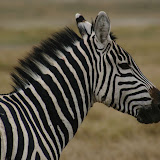Tanzania’s National Parks
The Ngorongoro Crater
*****************************************
The Ngorongoro Crater is actually a conservation area (since 1959) rather than a national park. This distinction does not really mean anything to the tourist but for the locals it means that the Masai tribe can continue to graze their livestock in the area as they have always traditionally done. Yes, that means they graze their cattle on the same grass the lions live in. As one person put it “Sometimes the Masai kill the lion, sometimes the lion kill the Masai.” The area became a UNESCO World Heritage Site in 1979. There are an estimated 25,000 animals within the crater.
Wildlife
*****************************************
The “Big 5” all reside in the crater however the chances of seeing them all here are rare. There is a dense population of lions in the area so get ready to tick then off the list. Hyenas and jackals are also common, leopards are also around but always elusive, while Cheetahs rarely frequent the crater itself. The main wildlife you will see are buffalo, zebras, wildebeest, bucks, gazelles, hartebeest and eland.
 |
| Ngororngor |
There are a few black rhino in the area but the likelihood of you seeing them is very rare. Hippos are also in limited numbers and while you will most likely eat lunch by the edge of ‘hippo pools’ and see the backs of a few like rocks in the water, this is about all the viewing of hippos you are likely to get in the crater. Elephants are in the crater but they prefer to live up on the rim, it is mainly sole bull elephants that make the trip down the crater edge to feast on the fertile land.
